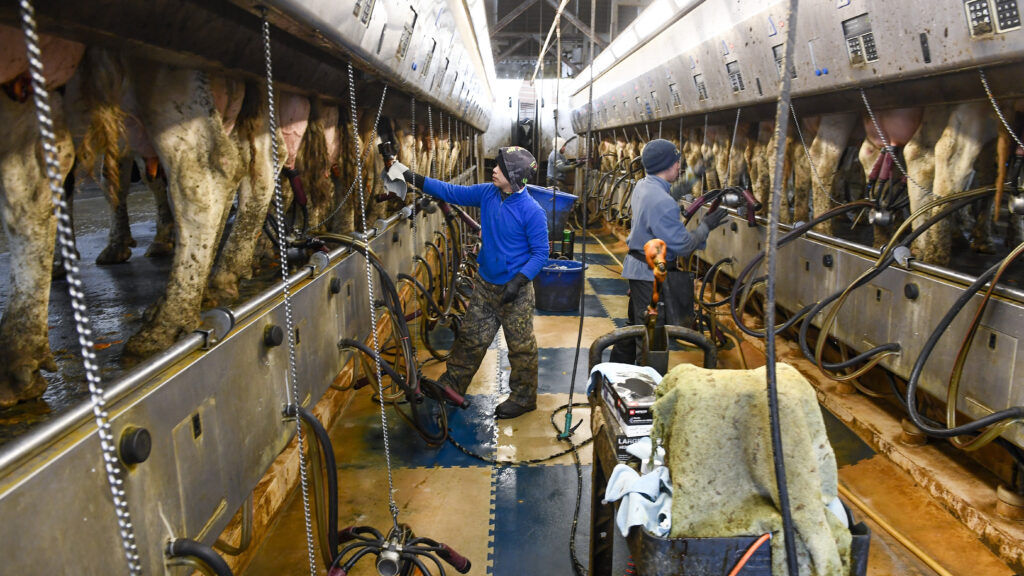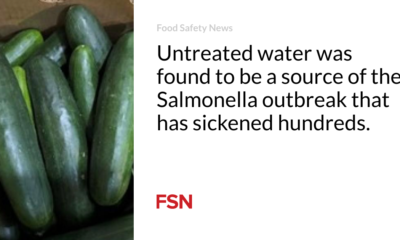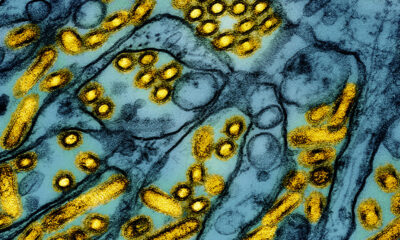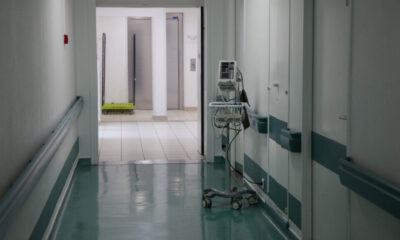Health
New measures to control the spread to people

WASHINGTON – The federal government will provide livestock farms with as much as $28,000 each to support protective measures and testing for the spread of the avian flu virus among dairy cows, officials said Friday.
The Department of Agriculture also allocated $98 million to aid states restricting interstate movements of affected livestock, and health officials announced they would spend another $101 million on expanded surveillance, testing, treatments and vaccines for the virus, which is spreading has now spread to at least 40 farms in nine states, with one confirmed human transmission.
The announcement comes amid increasing calls from infectious disease experts and public health officials to get a clear picture of the spread of the virus and the risk it poses. Although officials say the risk of spread to the general public is still very low, farm workers are repeatedly exposed to potentially sick cows. Still, early efforts by federal and state health officials to strengthen protective measures have had limited success.
The USDA has been criticized for not yet offering financial incentives to dairy farmers with outbreaks of H5N1 in their herds, unlike compensation programs that have been The key to engaging poultry farmers to help stop the spread of the virus among the livestock birds.
While funding for testing and shipping and veterinarians’ time will all help, compensating producers for the loss of milk production will have the most impact, says Fred Gingrich, a veterinarian and executive director of the American Association of Bovine Practitioners. “The lack of funding has been a major barrier to timely and accurate disease reporting, which is critical,” he said.
Since a federal testing order was issued on April 29, federal labs have conducted 905 tests on cows for the virus, the USDA told STAT, adding that 112 were “presumptive positive.”
Affected farmers could receive thousands of dollars over the next 120 days to provide personal protective equipment to workers, ship on-site tests to federal labs, safely dispose of contaminated produce and seek veterinary care. Employees could also be compensated for participating in bird flu research led by the Agriculture Department and the Centers for Disease Control and Prevention.
In addition, the USDA said it will compensate farms for lost product due to H5N1 contamination. The money will come from an existing emergency aid program normally used to cull sick poultry and other livestock.
“Dairy cows with H5N1 generally recover well and there is little mortality associated with this disease. It dramatically limits milk production, which could cause economic loss for producers with affected buildings,” USDA Secretary Tom Vilsack told reporters. “We want to support farmers… to offset some of those losses.”
Dairy cows that have become ill with bird flu experience a sharp drop in milk production. That has resulted in farmers losing anywhere from $100 to $200 per cow per day, Gingrich said. In large herds these losses increase quickly. “If we can obtain payments for milk production losses due to this disease in an affected herd, this will significantly improve reporting compliance and our ability to learn about this disease on individual farms and make it easier to control its spread “, he said.
The CDC also said it has “identified an additional $93 million” to build laboratory capacity, scale up wastewater and exposure monitoring, and boost genomic sequencing. The Food and Drug Administration has announced that another $8 million will be spent to strengthen testing and monitoring of commercial milk supplies. The funds, officials said in the statement, “may also enable the FDA to collaborate with universities on critical research questions.”
Health officials have been preparing for “an outbreak of bird flu like this for 20 years,” Health and Human Services Secretary Xavier Becerra said.
“It is critical that we are well positioned to test, treat and prevent the spread of this virus. I think that’s clear from everything we’re saying,” he said.
The funds announced Friday will be directed to farms with confirmed cases of H5N1, although the CDC on Monday separately urged all farms and slaughterhouses to provide protective equipment to workers.
“We recognize that from a worker safety perspective, risks may already exist before the herd is confirmed to be positive,” CDC Deputy Director Nirav Shah said Friday.
Yet there is no mechanism that requires workers to wear protective equipment, conduct tests and participate in surveys.
“For farmworkers, that’s really a voluntary circumstance,” Vilsack says. “I’m sure if they’re willing to work with CDC, I’m sure CDC would be happy to oblige.”
Industry groups showed early support for the increased investment.
“Caring for farmworkers and animals is critical to milk producers, as is protecting against potential risks to human health and reassuring the public,” Gregg Doud, president of the National Milk Producers Federation, said in a statement.
Clarification: An earlier version of this story quoted Vilsack as saying that “approximately 80” cows had been tested for the H5N1 virus since a federal testing order was issued on April 29. The USDA later said he had misinterpreted a reporter’s question. Federal laboratories are conducting approximately 80 more tests per day than before the implementation of the federal order.











![[B-SIDE Podcast] The risks of using e-cigarettes and tobacco products, especially among young people](https://blogaid.org/wp-content/uploads/2024/07/B-SIDE-Podcast-The-risks-of-using-e-cigarettes-and-tobacco-products-300x240.jpg)
![[B-SIDE Podcast] The risks of using e-cigarettes and tobacco products, especially among young people](https://blogaid.org/wp-content/uploads/2024/07/B-SIDE-Podcast-The-risks-of-using-e-cigarettes-and-tobacco-products-80x80.jpg)
